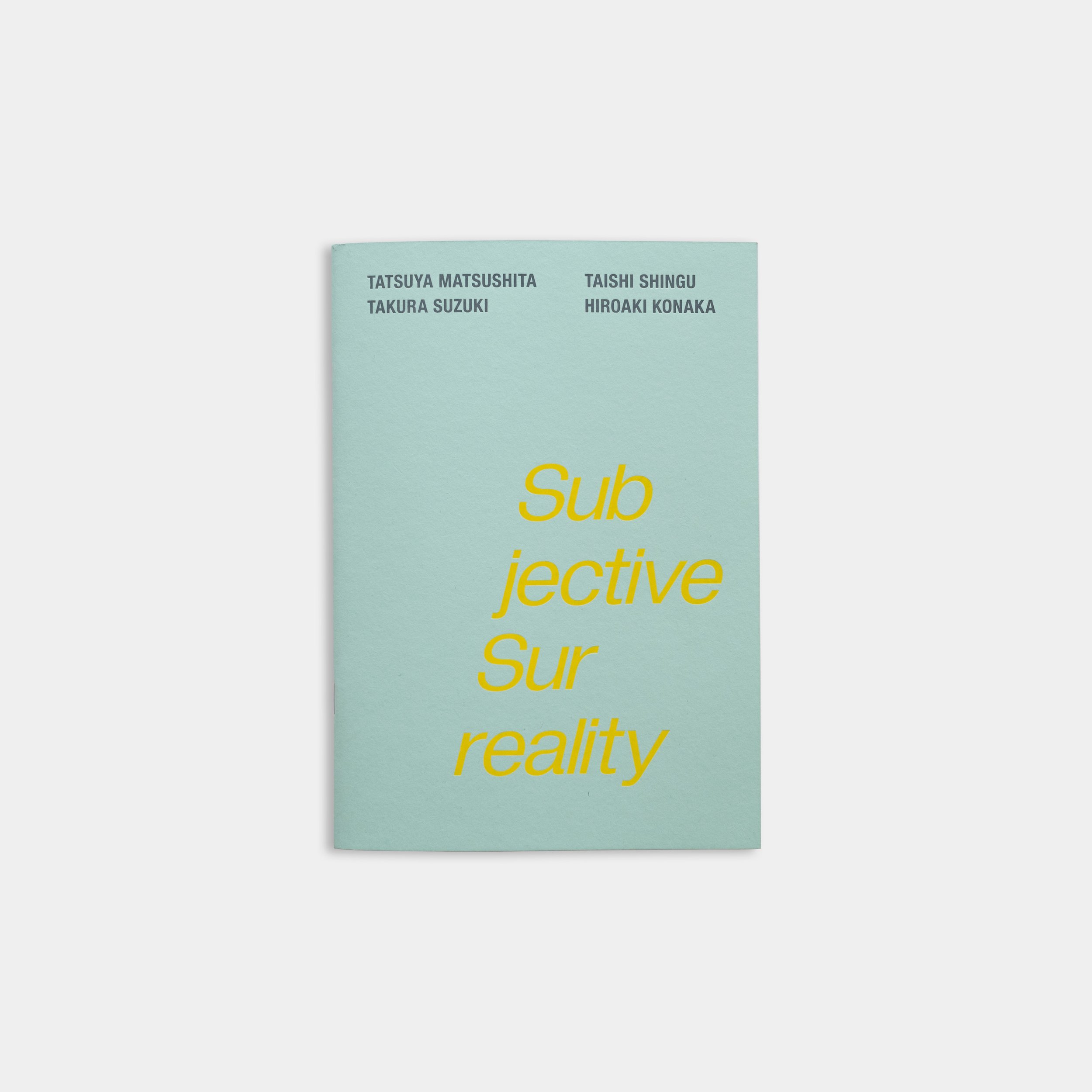HOME > EXHIBITIONS > SUBJECTIVE SURREALITY
Subjective Surreality
Hiroaki Konaka
Tatsuya Matsushita
Taishi Shingu
Takura Suzuki
February 23rd – April 2nd, 2023
Opening Reception:
Thursday, February 23rd, 6–8pm
Each of the four artists in this exhibition approach reality—and therefore also surreality—in vastly different ways. This radical subjectivity is what makes the show come alive. Hiroaki Konaka’s gauzy, lyrical paintings reflect his interest in memory and the personal. Takura Suzuki’s piece in the show, a dominating presence by virtue of its size, plays with references and ideas around the internet and smartphones. Tatsuya Matsushita’s work, with its echoes of the human body, is literally visceral. Taishi Shingu’s graphic and colorful manga references serialize experience into an impressionistic narrative. Each of them distorts and subverts reality in their own manner.
The original Surrealists were concerned with unlocking the secrets of the unconscious mind. By plumbing the depths of their psyches, they were able to vividly turn themselves inside out. We see a similar urge in the work in Subjective Surreality, though with such an array of aesthetic approaches it might be hard to recognize at first. Still, all four artists in this show have shown us what keeps them up at night, what most concerns them, and the secret content of their minds.
EXHIBITION VIEW
Photo: Miki Yamato
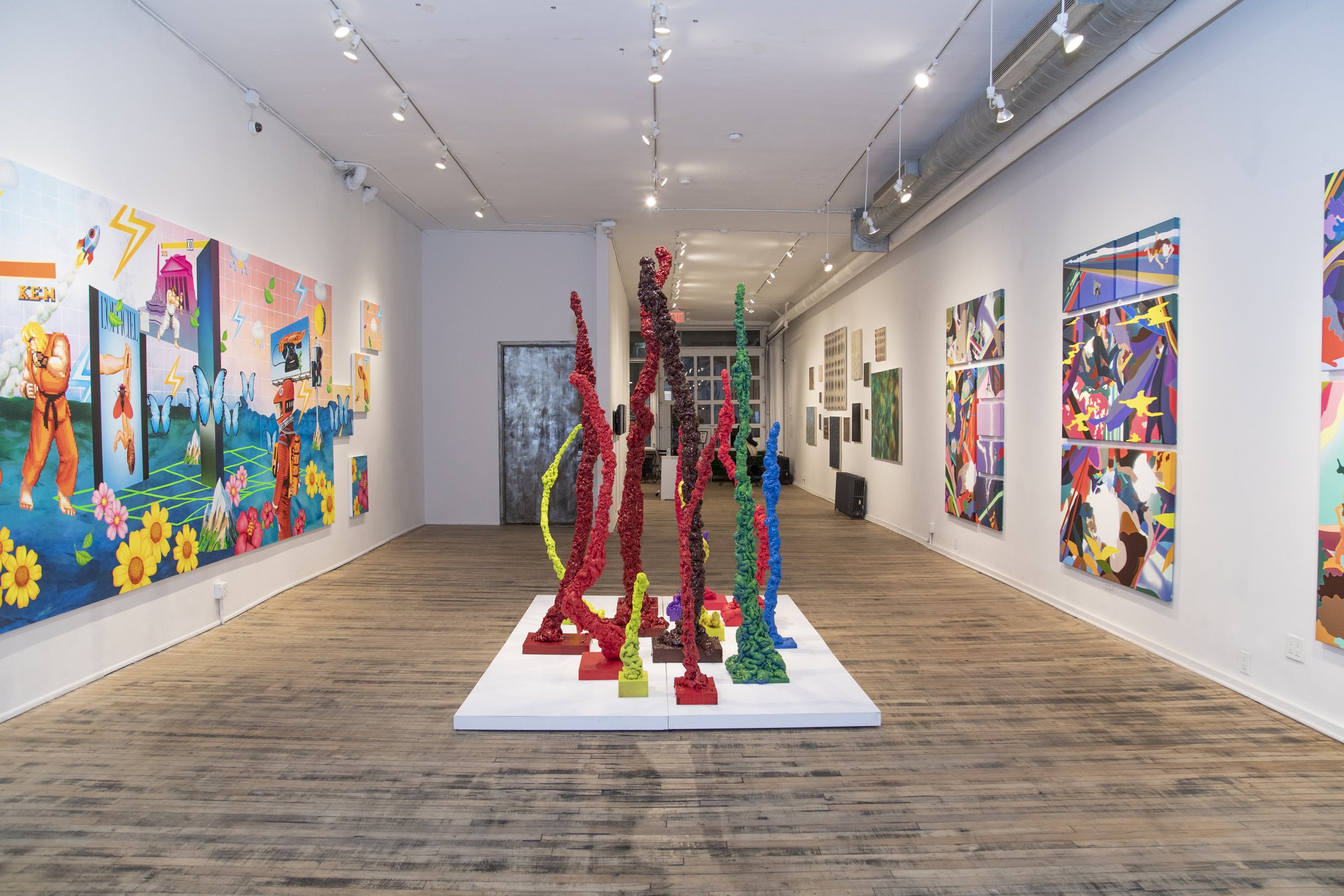
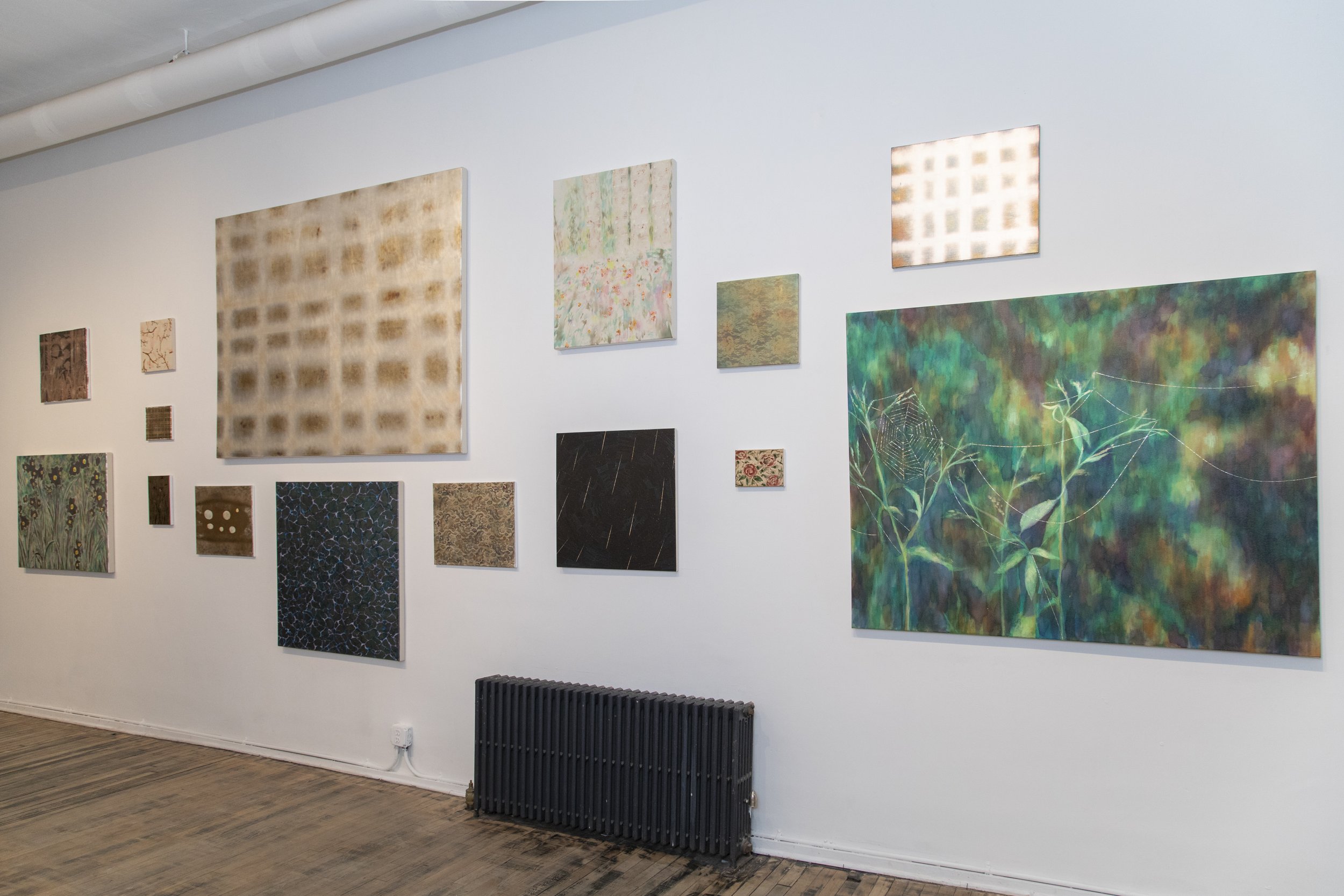
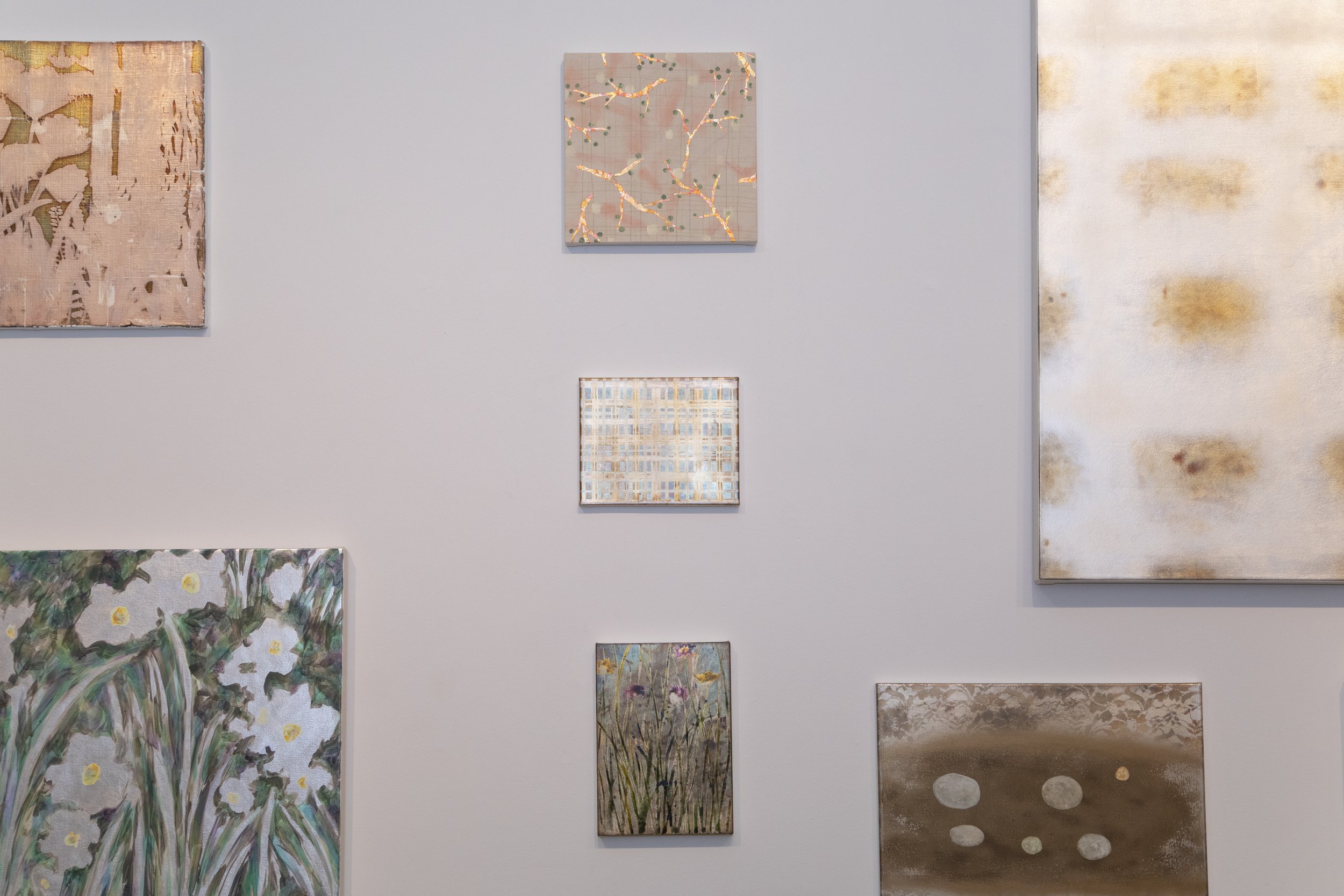

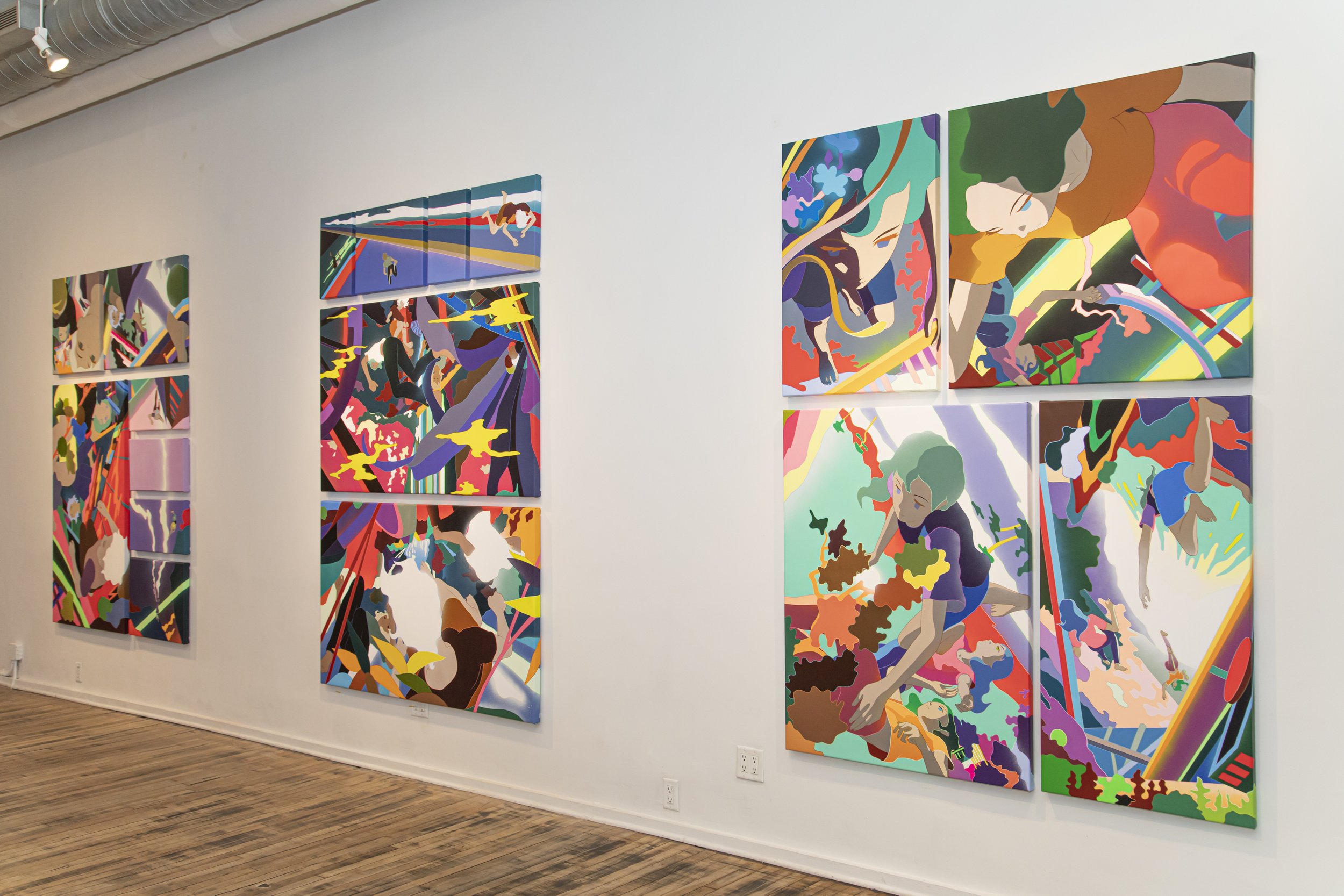
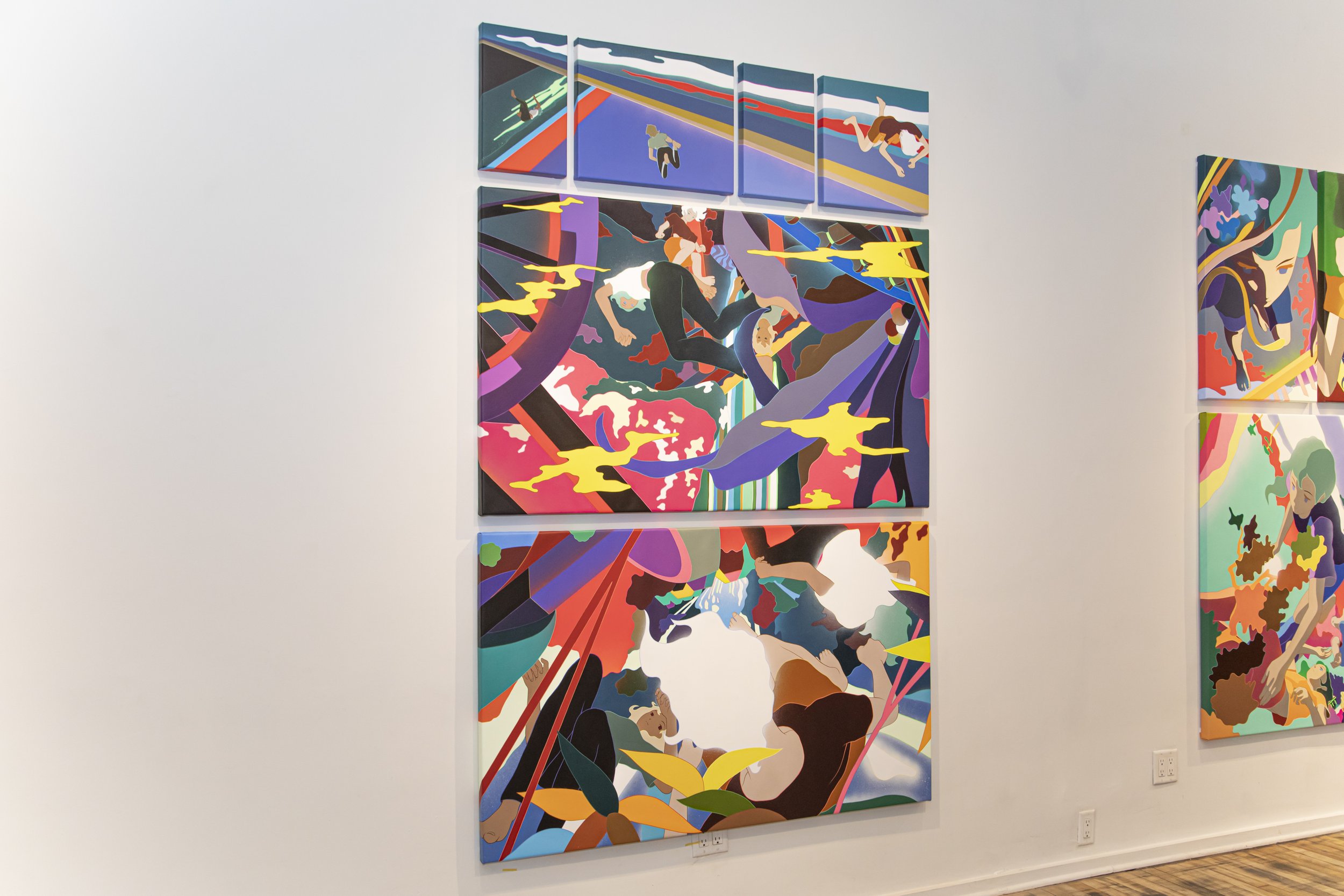
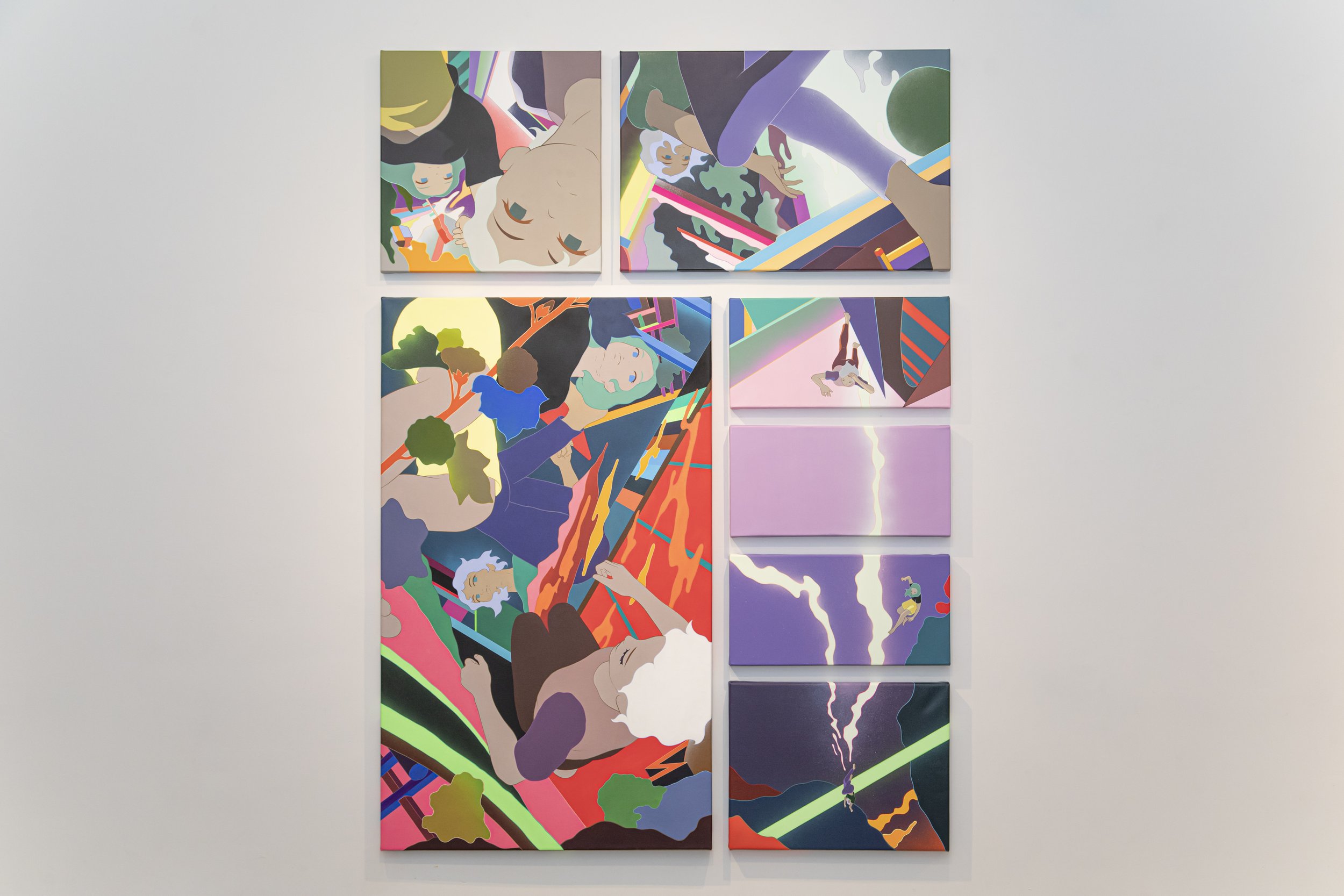

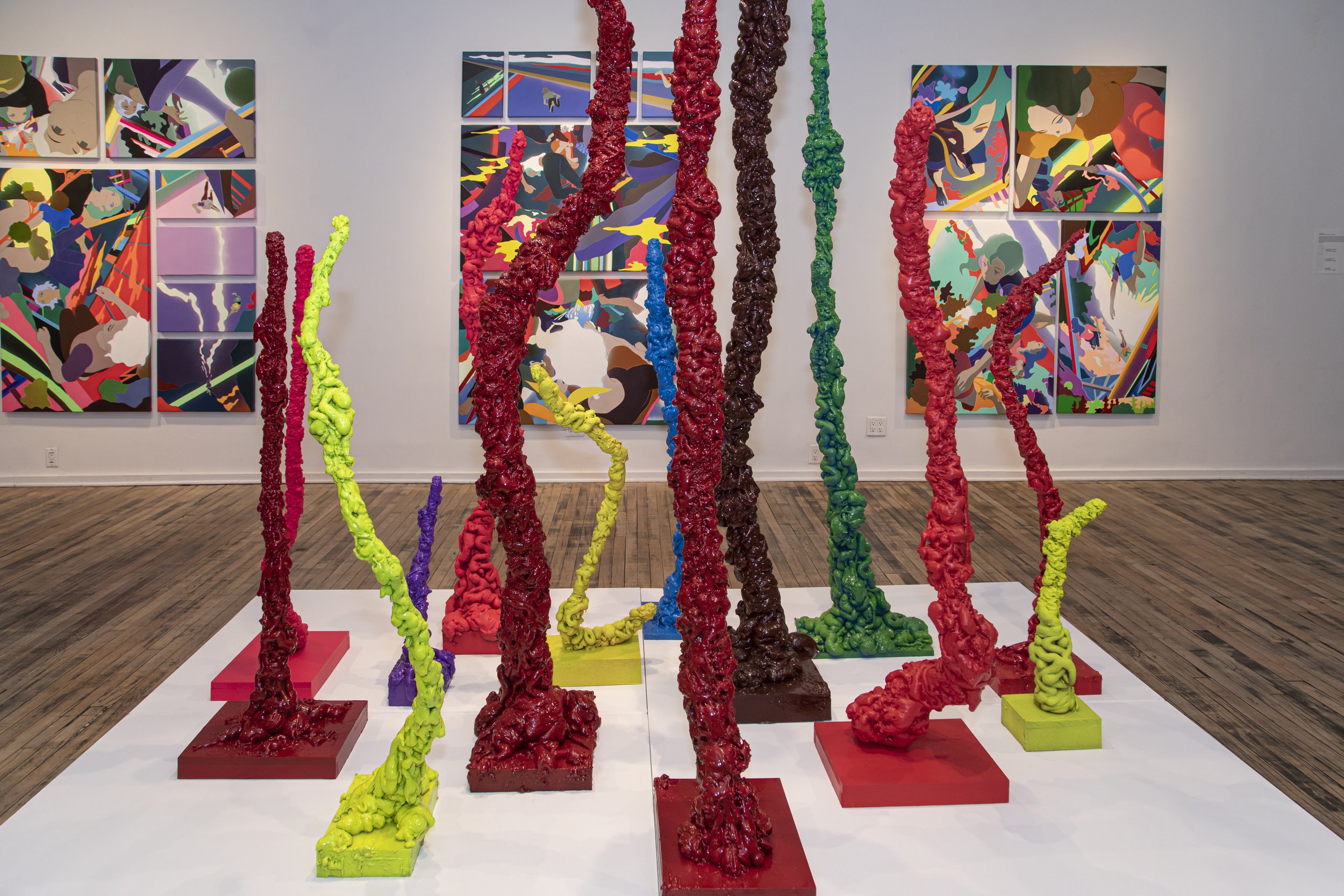
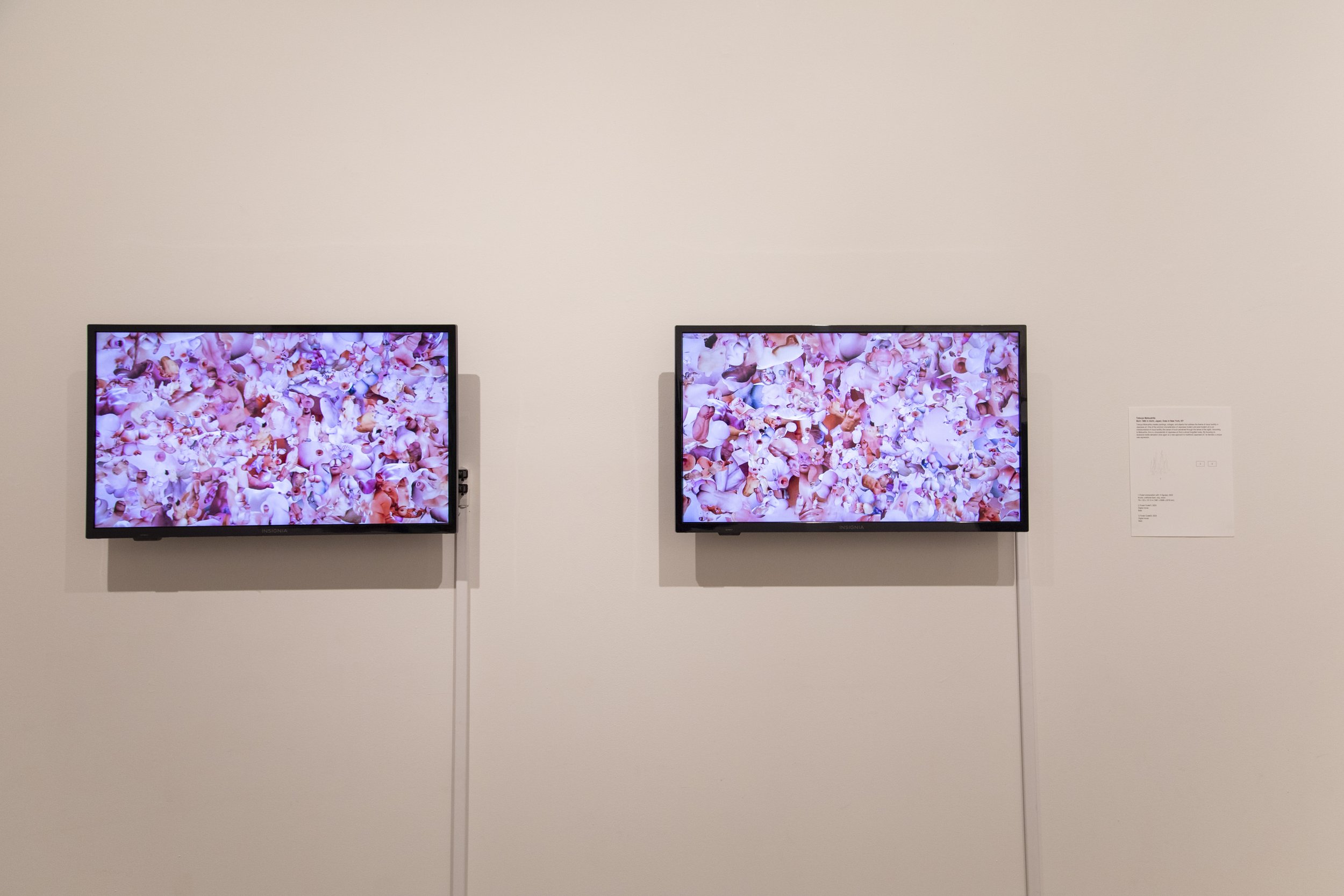
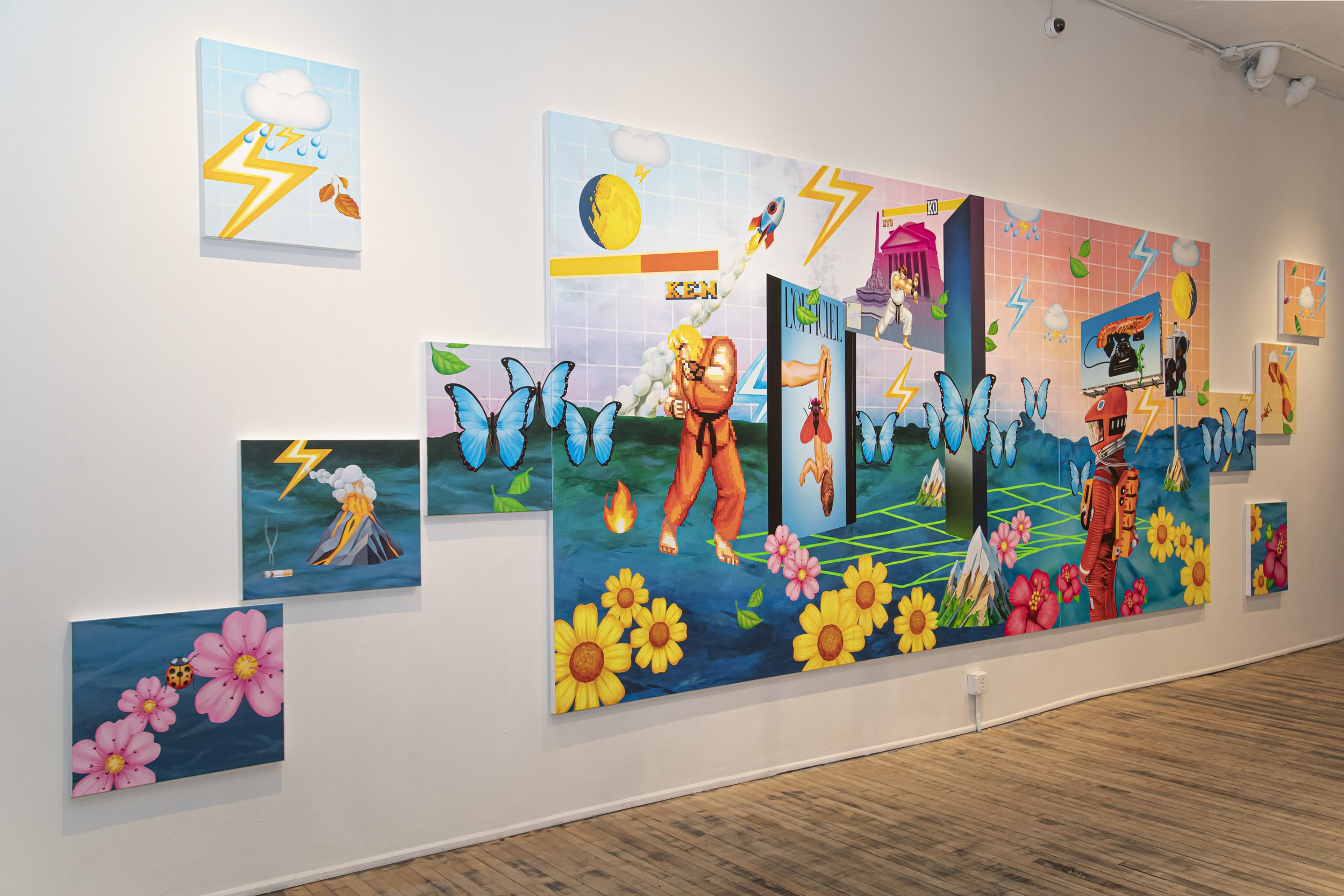

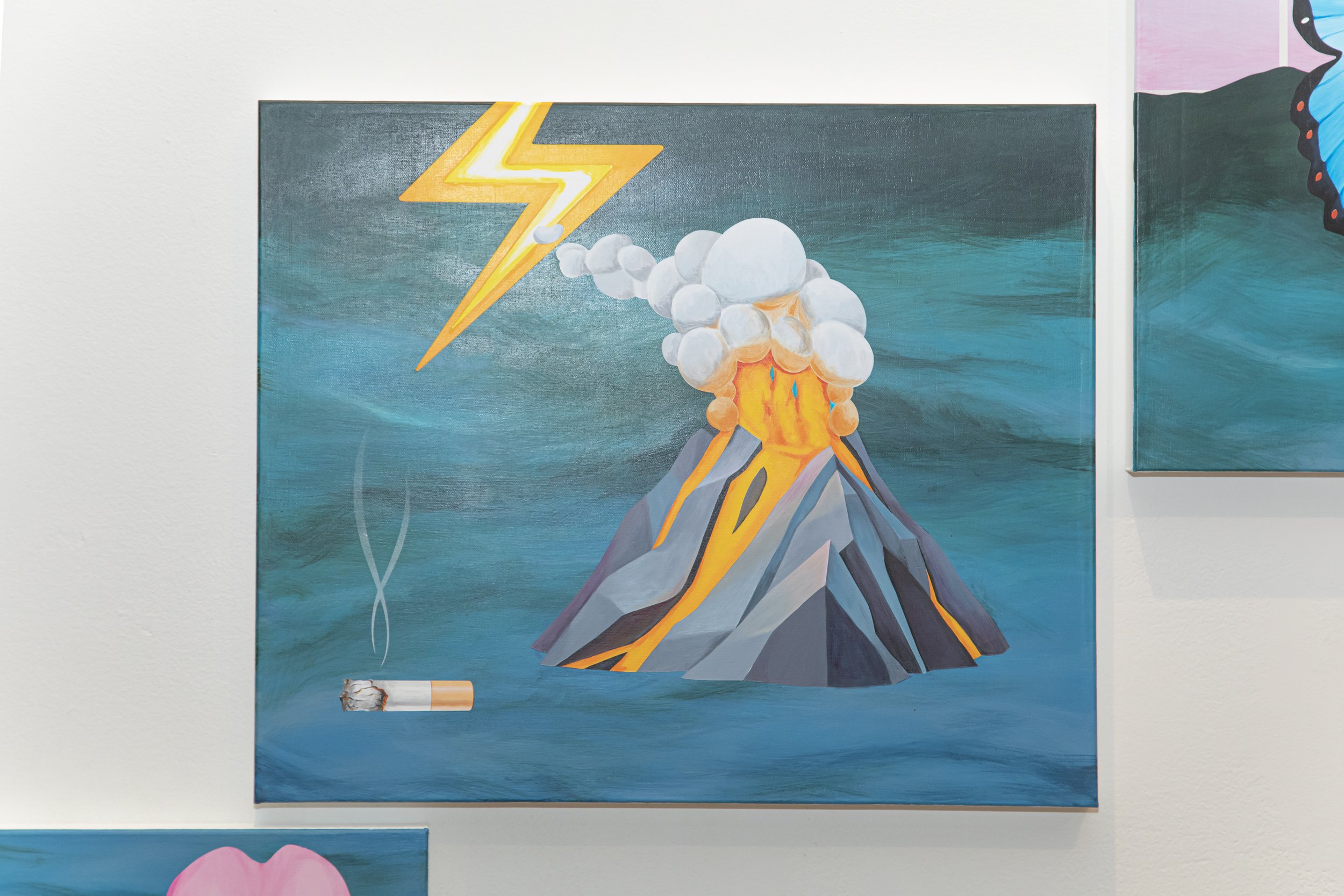
Hiroaki Konaka
Hiroaki Konaka draws on his childhood experiences of nature and the lighting of digital screens to portray the realities of the modern world. He incorporates painting and photographic/monitoring features he learned as a student, and works with foil, pearls, dyes, and other materials that influence space-time, people, and the environment to create works that are in a constant state of flux. His artwork fuses images, photographs, and paintings, an approach that generates and resuscitates images based on an animistic perspective on nature, the idea that all things have a soul.
FOREST
2017 Silver metal leaf, dye ink and acrylic on canvas, panel
20.9 x 17.9 inches (53 x 45.5cm)
INTERVIEW
MEMORY AS AMBIGUITY
– An interview with Hiroaki Konaka
I’ve heard that you deal with the idea of memory in your work. Can you tell me more about that? How does memory impact your art?
I think of memory as ambiguity, and of memories that cannot be converted into language. In this context, I create works of art that express that each of us exists while being connected to each other.
What is the process like when you create a new work? Do you begin with sketches, or do you work immediately with paint?
The process of my work is mostly based on recording what I see and feel in my daily life by using my iPhone, digital camera, and film camera. I use those materials to draw and combine them into a single painting.
What sort of a mood do you want to impart to your audience? How do you want the viewer of your work to feel when looking at it?
I want to create a relaxing mood as if the sun rises, a little cold air enters your body with a deep breath, and then it becomes a little warmer again and takes you out into the world. I want to create a work of art that will take the viewer to a distant place while comforting the feelings of the viewer.
Tatsuya Matsushita
Tatsuya Matsushita creates paintings, collages, and objects that address the theme of visual tactility in Japanese art. One of the common characteristics of Japanese modern and post-modern art is an overabundance of visual tactility (the sense of touch perceived through the sense of the sight). According to Matsushita, this is a characteristic of Japanese art that is almost forgotten today. By focusing on excessive tactile sensation once again as a new approach to traditional Japanese art, he devises a unique new expression.
FOREST(COMPOSITION WITH FOURTEEN FIGURES AND CHILDREN)
Acrylic, urethane foam, clay, wood
78 x 122 x 101.5 inches (198.1 x 309.9 x 257.8 cm)
INTERVIEW
LIFE-ORIENTED SOCIETY
– An interview with Tatsuya Matsushita
Your work reminds me of the body—particularly the inside of the body. Is this an inspiration to you?
Yes, this piece is set up as a human being with his/her inside and outside reversed. In other words, the inside of the digestive tract is exposed to the outside.
Who are some artists from the past that influence the shapes and textures of your work? Is it safe to say that Giacometti is an influence?
Yes, I am inspired by Giacometti. I think the impression that Giacometti's work represents is a human being who lacks internal organs, who is only skin and bones. My work, by contrast, is a man with only his internal organs. In other words, it is a Giacometti reversed. I am also influenced by Tetsumi Kudo, Liu Kishida, Peter Harry, Paul McCarthy, and others.
How did you arrive at your color palette?
I found the organs to be more colorful than people thought they would be. Muscle is pink, blood is red and blue, fat is yellow, and so on. Also, my work is not about "life," but about a life-oriented society. So, I use fluorescent and other unconventional colors to show that it is synthetic.
Taishi Shingu
Taishi Shingu was born in the countryside of Okuizumo in Shimane Prefecture, Japan, a place where folklore has been handed down from generation to generation. As a child, he became obsessed with comics and manga, and once he began to attend art school, he added a passionate in the surrealists and Jackson Pollock. For Shingu, manga and painting overlap quite spontaneously. In this exhibition, he presents work that straddles the line between the two. Shingu speaks of his work as being a way to visualize the invisible world.
A TOUR OF WATERFALLS
2023 Acrylic on canvas
92 x 60 inches (233.7 x 152.4 cm)
INTERVIEW
A SENSE OF ABSENCE
– An interview with Taishi Shingu
Your work is influenced by manga. What are your earliest memories of reading manga?
I think my first memory of reading manga is "Dragon Ball". I adored how the characters' hair would turn yellow and their bodies would glow when they got excited.
Which manga has been the most influential on you?
The manga that has influenced me the most is Akira by Katsuhiro Otomo. I picked it up in the junior high school library and was shocked by the power of the pictures.
You’ve made quite a large number of paintings for the exhibition. What drove that decision?
My works in this exhibition were created in Asakusa and Shibuya. I was born and raised in Japan, but when I returned there from living in New York, I felt a sense of absence, as if I were traveling abroad. In order to express this sense of travel, I needed to show the movement of many canvases in a row, like panels in a comic book.
Your work also makes me wonder: What are your thoughts on VR and AR?
When I observe real space as if experiencing VR, I am sometimes surprised by the overwhelming amount of information.
Takura Suzuki
Takura Suzuki’s work explores the idea of the cyborg, which he sees as representing current social phenomena such as data-driven technologies like AI. He metaphorically depicts a world that reflects today’s society, where the line between humans and machines is blurring, and the increasing use of digital technologies complicates the interaction between them. Through his work, he does not attempt to discuss his critical opinions. Rather, he invites the viewers to a complex reality and asks them to understand it in their own way.
JAMMIN / THROWING STONES / TIME TRAVELIN (*From left to right)
2023 Acrylic on canvas
89.5 x 63.7 inches (227.3 x 161.8 cm)
INTERVIEW
FOUND OBJECTS
– An interview with Takura Suzuki
You’re making a large painting for the show. What informed your decision to work at so big a scale?
My initial plan for this show was to make a cohesive series of works with medium-sized paintings. But to fully convey my concept and dynamic visual language I thought it would be much better to go with one huge painting. Also, the space is very large and tall, so I'm sure a bigger painting will suit it well.
How does the internet inform and inspire your art?
I spend so much time on the internet daily. I find every element of my painting on the internet or on the phone (like emojis). Like painters in history found objects and interests in nature, social life, and politics, I find my interests in the internet where I spend most of my time today.
Do we spend too much time on our phones? Are our smartphones helpful tools or are they a negative force?
We spend too much time on our phones compared to ten years ago. But this is/will be normal for most of us. I believe it's not a good or bad thing. We just have to live in this heavily digital-oriented society. And what I can do as an artist is to depict what’s going in through my lens.
Relative Contents
Shop
Subjective Surreality
HIROAKI KONAKA, TATSUYA MATSUSHITA,
TAISHI SHINGU, TAKURA SUZUKI
$15.00






